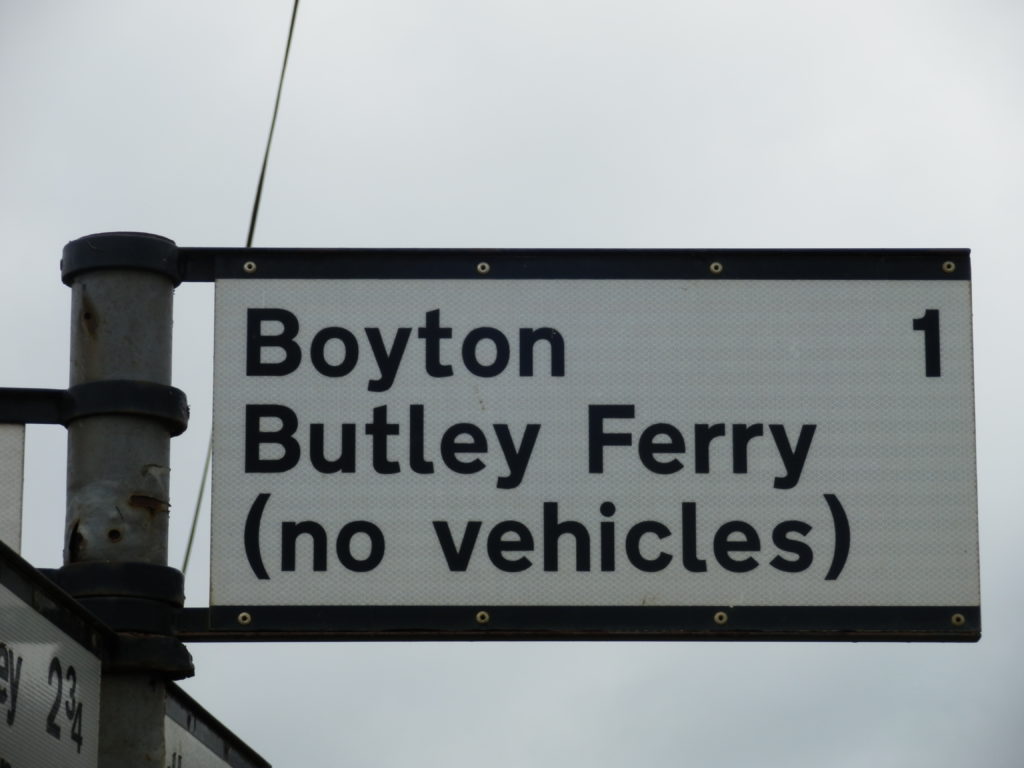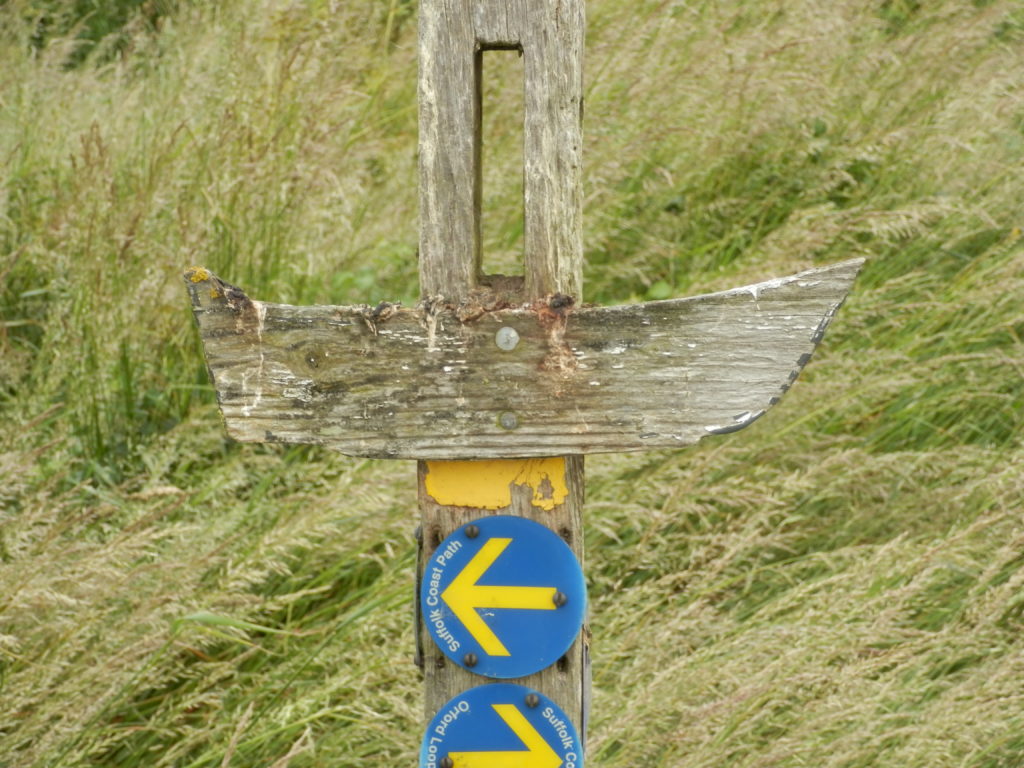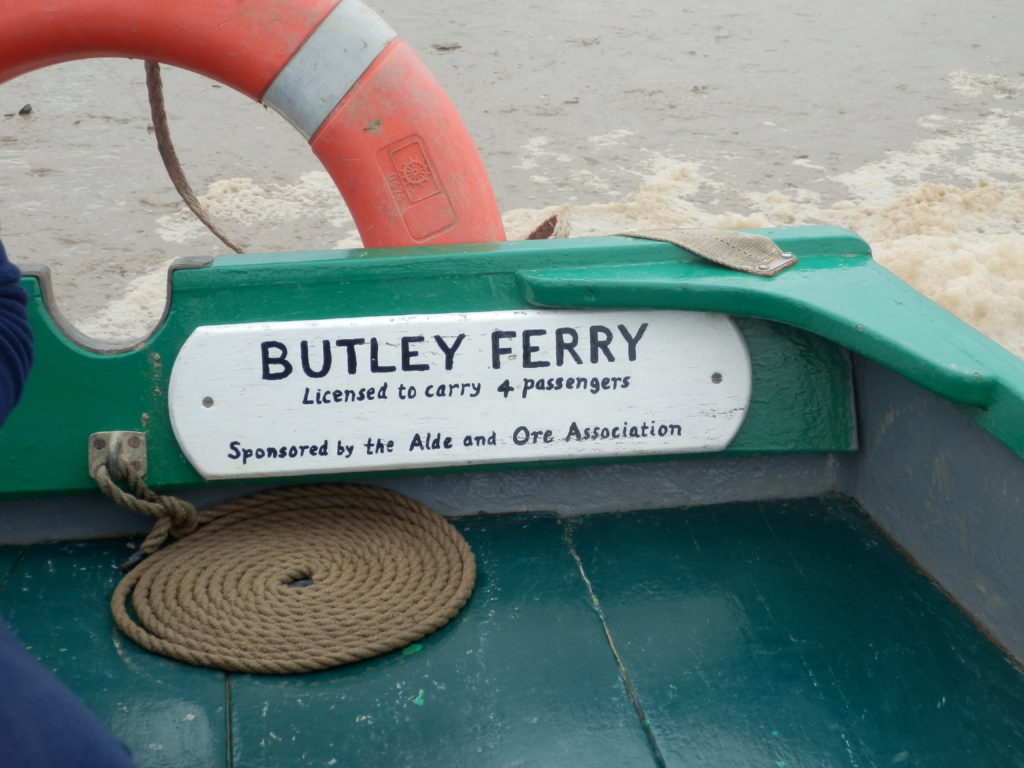Melissa Mouchemore makes the first of three crossings in a small and mysterious Suffolk ferry.

This ferry – did I imagine it? Twice I have returned just to check. And I would go again now if I could. I even lived near it once without knowing.
1990
I was lured to teach in Suffolk (South Area), as it was called in the advert, by a crafty campaign involving photos of beach huts and yachts. I was going to live near the sea! But almost as soon as I arrived, I felt doubtful and restless. It was the landscape, I decided – flat, empty, grey. A frustrating non-coast. The sea was unattainable beyond a fake sea of mud, squelchy vegetation and more mud – trudge as much as you liked along the serpentine ridge of the river wall, leaning into the resident north-easterly and you still wouldn’t reach the silent brown line of it.
I stayed for several years, worked hard, but was always planning my escape. I left (or so I thought) and went to teach abroad somewhere far more populous, the horizon blocked out by spires, turrets and tower blocks.
Crossing 1: August 2004
It was London where I settled but friends I had made in Suffolk wonderfully, reliably kept calling and I was so often back there (South, North and West areas, no East – the sea had that) that I kept a pair of walking boots in Jo’s cupboard. She first heard about the Butley Ferry.
On the map, Butley creek tangles through saltings and silt on its way to join the Rivers Alde and Ore. A light blue narrow channel bordered by wider bands of brown – mud! And one dotted line across the creek – FERRY P (limited service). Intriguing – no marina or boatyard, village or quayside. No road or pub. Only marshland and farmland. Did a ferryman simply sit by the side of the river all day?
The track twisted through harvested fields of cylindrical hay bales and resting farm machinery. Dry reeds bristled in ditches. The sloping roofs of Butley Ferry Farm and its barns appeared some way ahead above clumps of hawthorn. Helpfully named – I had left my map at home.
Past the farm the track came to an abrupt end but over the stile across a field I could see my next clue; a raised bank. I knew a Suffolk river wall when I saw it. But would there be a ferry on the other side? Only now did I remember the brackets on the forgotten map – (limited service). No glimpse of water until I climbed the grassy ridge and then, all at once, there it was: an entire marbled riverscape – grey-green, grey-blue. Tide outish, possibly – I had forgotten the tide tables too. Lagoons revealed, the far bank a slick curve of grey-brown.
On this side, a wooden jetty eased down into the water, the same jetty seeming to emerge on the opposite bank. There were other markers of boating activity – a boat’s fender slung from some barbed wire, a post crowned with a welly. No boat though.
A blank rectangle patched with lichen was nailed on a post next to me on the river wall, an empty plastic wallet flapping below. But above was a sliver of hardboard. It was cut into the shape of a boat.

‘It’s crowded today’
A wiry-haired walker and her companions were striding towards me along the embankment. I felt slightly guilty that I was in their space but then again if anyone was a crowd was it me?
‘There’s usually a number on the post’
‘I thought he said he was coming at 12.30.’
Watches were checked – it was 12.40. The crowd shook its head. I looked down river. A small white motorboat flashed round the bend coming towards us. The ferry? The crowd shook its head again and turned to head back. That was definitely not him. The Butley Ferry was a rowing boat, always. The woman called over her shoulder – ‘perhaps the ferryman will come and then you can have your adventure’.
I was baffled by such impatience in an otherwise unhurried landscape, save for the speeding motorboat now nearing the jetty. In the next few minutes, when the crowd was only just out of hailing distance, a silver-haired man in gumboots jumped out of the boat and waved up towards me as I hurried down the path.
He was sorry he was late. He had to take some walkers up the Alde and then rush back here in time.
‘Weren’t there supposed to be three of you?’
I had to ask, as I found space for my feet in the hold, avoiding his bottle of Adnam’s and foil-wrapped sandwiches, what had happened to the rowing boat?
‘Oh that’s Graham. He’s the one who insists on rowing. He’s the purist.’
As he struggled to shift the boat from the mud, pole flailing and kicked beer bottle spinning, he explained that he was an amateur. They were all amateurs in fact – volunteers, starting the ferry service up again after years out of use. He handed me a leaflet – the ferry was run by The Alde and Ore Association which “exists to preserve and protect for the public benefit the Alde and Ore River and Butley Creek”.
When I was newly arrived and moaning around river walls, I thought of the devastating East Coast flood of 1953 as an historic event; flood level lines marked on pub walls, black and white photographs of high streets as rivers, an old gentleman in a fishing cap rowing past the shops. In my ignorance, I didn’t stop to think what it was I was walking on and why it was there. But a decade on, even I had come to understand that the floods were not, absolutely not, historical. And the river walls were all there was between the land and the surging North Sea. The Alde and Ore Association was clearly feeling that those in charge needed watching, that they were intending to sacrifice defences here in favour of more populated areas. The Government had a policy called ‘Making Space for Water’. The people of the South Suffolk riverbanks wanted to ‘Hold The Line’. I made my contribution to the ferry as I arranged the return crossing. He would have plenty of time to eat his sandwiches, he beamed as he cheerioed me.

I considered the familiar Suffolk mud as I picked my way along its higher reaches. The summer sun and weaker tides had dried out patches into jigsaw puzzles – each piece could be picked up and fitted back into its place or snapped like a biscuit depending on my whim. But there was still water all around me in the matted plants. You could see it in a strand of samphire held up to the light – an iridescent emerald vial filled with sea and river. Gritty green brine oozing over my fingers as I squeezed.
A certain salt marsh mania had seized Jo and I in recent years. There had been many hilarious explorations along the East Anglian coast at low tide, boots stuck, undignified slippages, marvelling that we could stand where boats had just sailed. Jo was using materials she found in her textile work; flaking fragments of boat timber, rusted nuts and bolts. I was an ardent assistant in these forays, once proudly presenting her with the fibreglass panel I had ripped off a disintegrating, half submerged dinghy. Any good? I did not necessarily have her designer’s eye.
We were often thwarted – what seemed a straightforward river route enticing us in could soon become a labyrinth of deep gullies and swatchways. Any labyrinth can catch you out but one with a tide demands the deepest respect. We learned to consult the tide tables carefully. I keep a photograph of our marsh manic days – our mud-soaked feet amidst the seablite, proof that adults can still go out to play.
Jo would like this ferry.
*
Subsequent crossings on the Butley Ferry are documented in Part 2, which will be published in the coming weeks.